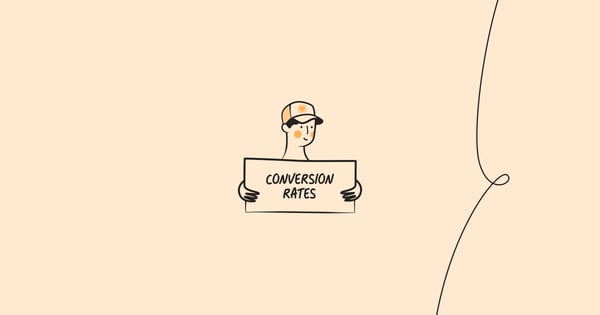Conversion rates are a bit of an obsession for a certain kind of marketer. And we seem to be growing more obsessed with them as time goes by.
According to Google Trends, search interest in the topic “conversion rate” has climbed consistently since its records began:
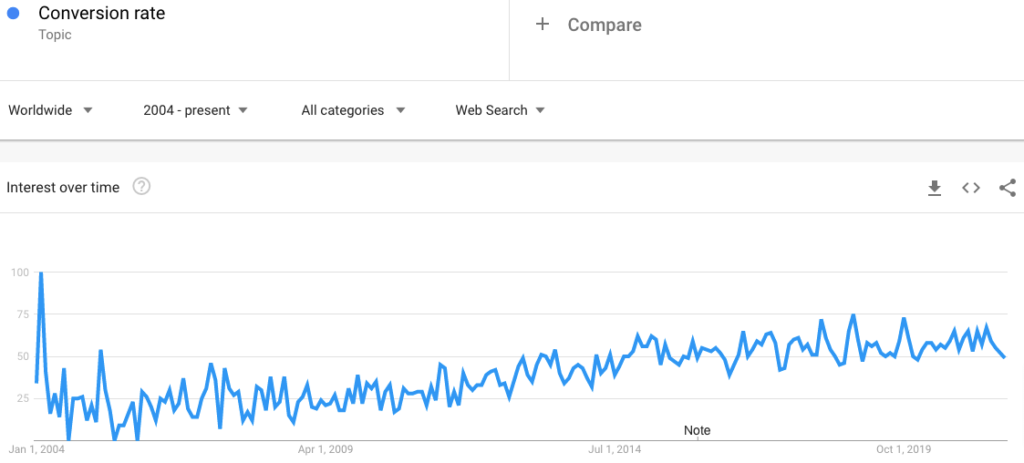
We all know how hard it is to “win the click” in the first place. We invest time and money in SEO, social ads, and paid search. So we want to know that when someone lands on our site, there’s a good chance they’re going to buy something.
Proof of our conversion rate obsession can be found in research from the US Association of National Advertisers, which surveyed its members to identify the most widely used and important KPIs.
Among the 39 KPIs in the survey, only five ranked among the top dozen for both “most important” and “most used”.
And as you’ve probably already guessed, one of them was “conversion”:

Now, let’s dig into how conversion rates are calculated, whether they really matter, and what a “good” conversion rate looks like in 2021.
And as an added bonus, if you stick around ‘til the end, I’ll give you some tips on what to do if your conversion rate needs a little work.

Table of Contents
1. How Are Conversion Rates Calculated?
2. Do Conversion Rates Actually Matter?
How Are Conversion Rates Calculated?
Marketers might disagree on a lot of things, but we’ve at least managed to arrive at a pretty much universally accepted method of calculating conversion rates:
Conversion rate = Sessions with transactions / Total sessions
The word “sessions” is important. We use sessions, rather than unique visitors, because it refers to the number of visits to a site or page within a given period (typically 30 minutes).
If a customer visits twice within that 30-minute period, it counts as one session. But if they come back after 31 minutes, that’s a separate session.
Why does any of this matter? Because sessions are a better measure of buyer intent than unique visits. You’ve got 30 minutes to close the deal, regardless of how many times a user bounces between various sites looking for the best price. If it takes longer than 30 minutes to convince them, bad luck—that’s a whole new session. Which, as you’ve likely established, means a lower conversion rate.
Of course, we can swap out the word “transactions” if it’s not relevant to your business. “Leads”, “subscriptions”, or whatever else you class as a “conversion” are perfectly acceptable too.
Do Conversion Rates Actually Matter?
The fact that you’re reading this article suggests conversion rates matter to you, and I can’t disagree with that. However, there’s certainly an argument that marketers place too much value on conversion rate benchmarks.
I totally understand why we Google things like “what is a good conversion rate?” We all want to compare ourselves against the competition and benchmarks are often the best we can do.
But conversion rates vary so widely across different industries and verticals that they can often be near to meaningless. If I’m running an e-commerce business, does it really help me to know that the average conversion rate across all websites is 3 percent?
That being said, conversion rates can definitely be helpful when used in conjunction with other key e-commerce metrics.
My biggest piece of advice here would be: don’t put all your faith in benchmarks.
Sure, look at them to reassure yourself that you’re doing a good job. We all need a “win” from time to time.
But conversion rates become more useful when viewed on a more granular level. Pick out your best and worst-converting landing pages, compare the content, layout, and other key elements, and use the findings to understand what motivates your audience to buy.
What Is a “Good” Conversion Rate?
You’re still with me, so I’m going to assume you want benchmarks, and you want them right now.
Here are three conversion rate benchmarks, defined using figures from Growcode and broken down by industry type, product type, and traffic type:
1. Conversion Rate By Industry
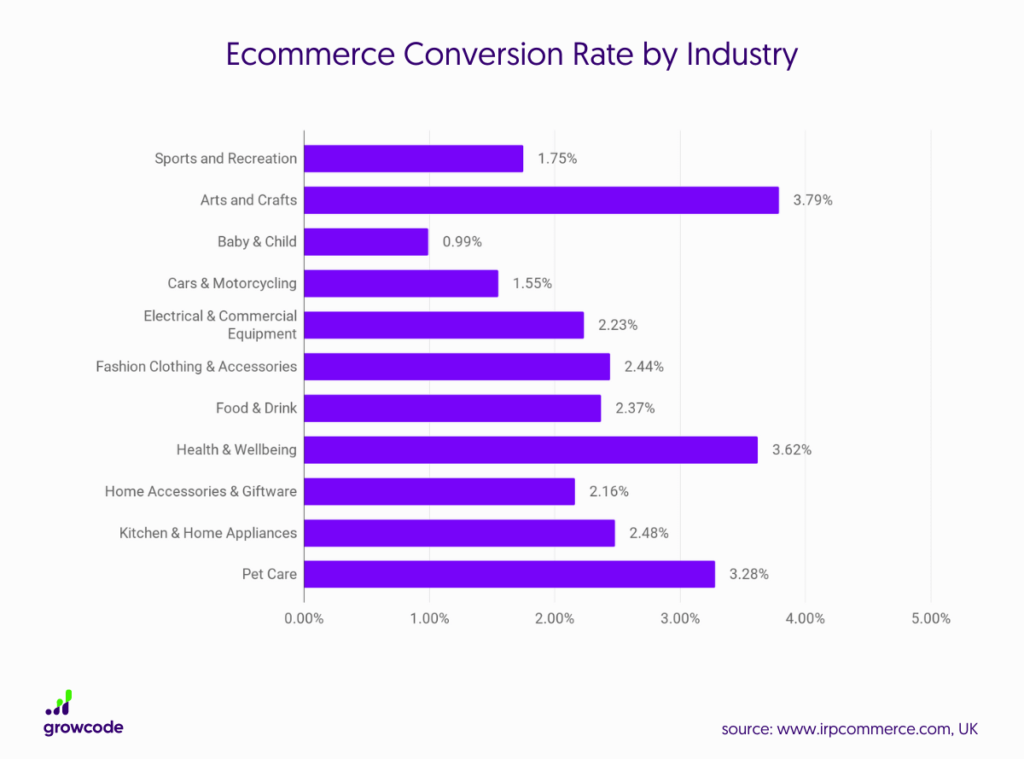
As you can see, conversion rates vary widely across different industries, from just 0.99 percent in the Baby & Child category to 3.79 percent in Arts & Crafts. That’s a difference of 283 percent.
So what can we glean from these figures?
It’s no surprise that one of the highest-performing industries is Health & Wellbeing. If you’re searching for a health-related product, there’s a good chance you have an immediate demand. Someone shopping for a heart rate monitor probably isn’t going to decide they don’t really need it at the last minute.
The same can probably be said for the Pet Care category.
However, it’s surprising—to me, at least—to see Arts & Crafts topping the list. With the best will in the world, it’s not what you’d call an “essential” product category.
Perhaps its strong performance is down to the comparatively low price points of a lot of Arts & Crafts products.
2. Conversion Rate By Product Type
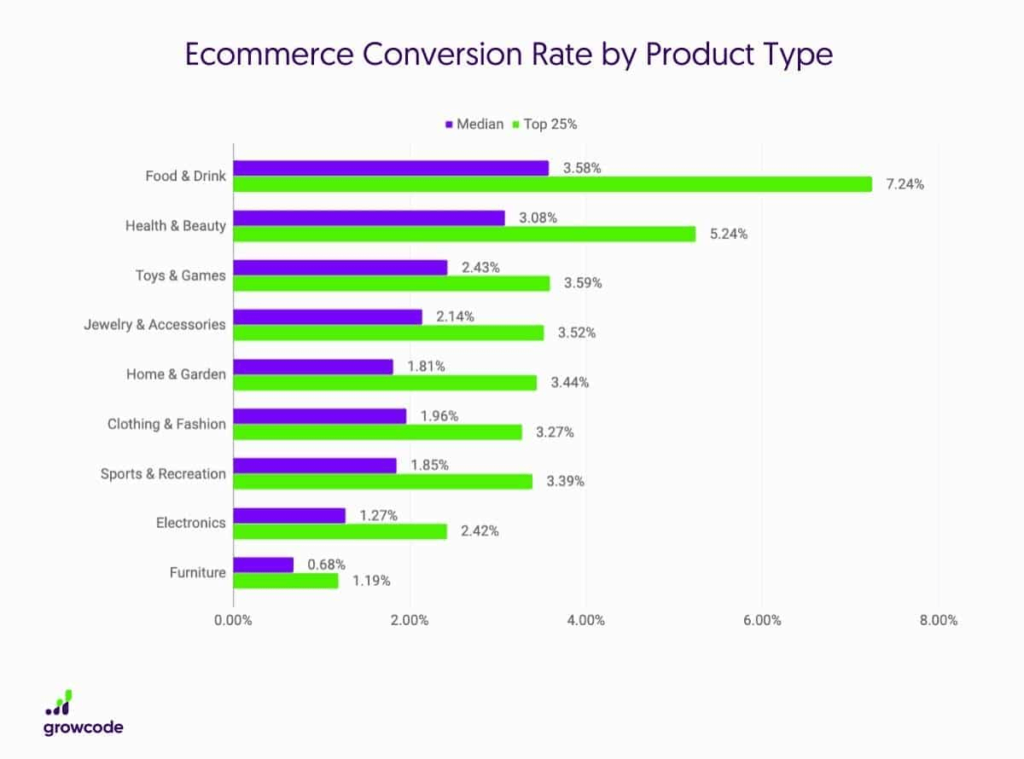
It’s a similar story when it comes to product type.
Food & Drink tops the bill with a median conversion rate of 3.58 percent, while the upper quartile of products in the category convert at almost 7.5 percent.
Again, Food & Drink definitely falls into the category of “essential products”—plus, unless your diet consists solely of chateaubriand and champagne, these products are comparatively cheap.
At the bottom end of the scale, we find much more expensive items—like Furniture and Electronics—with longer consideration periods.
3. Conversion Rate By Traffic Source
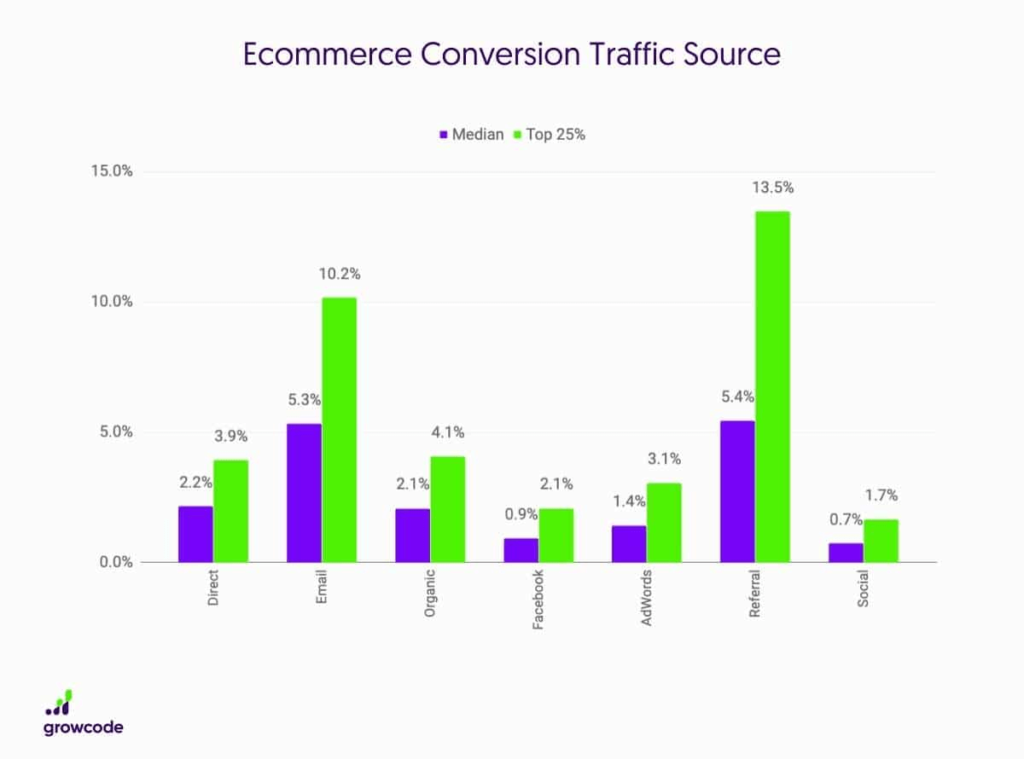
Things get a little more interesting (and less predictable) when we look at e-commerce conversion rates by traffic source.
Referrals take the top spot, with a median conversion rate of 5.4 percent. I guess this speaks to the value of word-of-mouth marketing, right? If someone we trust—whether they’re a friend, a family member, or an influencer—recommends a product, we feel more confident in buying it.
What’s more surprising is the superb conversion rate of email marketing.
Sure, we already know email is extremely effective. But to convert at 0.1 points less than referrals? That’s pretty impressive. It definitely highlights the value of building an engaged email list and hitting them with relevant products and offers.
It’s also a little surprising to see Facebook and other social platforms faring so poorly.
After all, Facebook’s ad revenues have rocketed over the past decade:
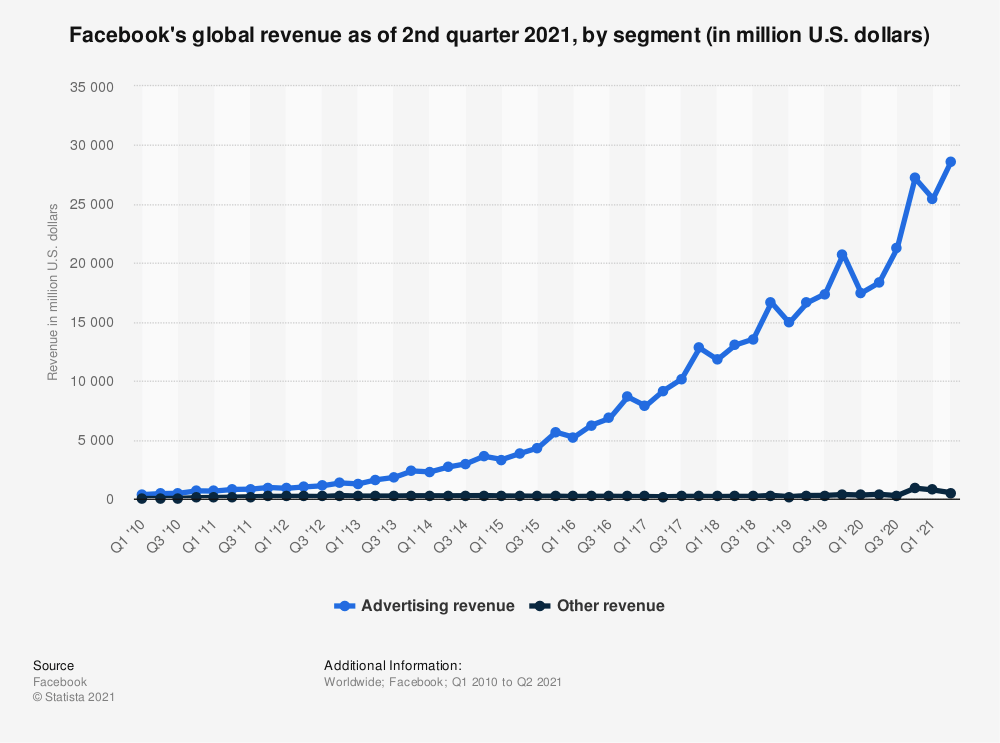
Even the coronavirus pandemic hasn’t slowed them down, so you’d expect the platform to deliver stronger conversion rates.
What to Do About a Below-Average Conversion Rate
Okay, you’ve looked over all the benchmarks and the news isn’t good—you’re lagging behind the competition.
My advice to you would be: don’t panic.
Remember, conversion rates aren’t everything. Taken in isolation, they don’t tell you a great deal about the health of your website or the performance of your key pages.
To give an extreme example, let’s say you’ve got two landing pages on your site:
- The first only ever attracts one visitor, and that visitor converts, giving the page a conversion rate of 100 percent.
- The second brings in 10,000 visitors, 100 of whom convert, at a rate of 1 percent.
So does that mean page #2 is “worse” than page #1? Almost certainly not.
And, as I’ve already discussed, benchmarks aren’t everything either. Even within the same industry, there are going to be huge discrepancies.
For instance, H&M and Prada would both fall into the “Fashion Clothing & Accessories” category, but they’re totally different types of business. You’d naturally expect H&M to have a higher conversion rate because its products are many, many times cheaper than Prada’s.
So take those benchmarks with a healthy pinch of salt.
But if you’re convinced that your conversion rate needs improvement, here are a few actions to consider.
1. Optimize Your Popups
Obviously, I’m a big fan of popups. If you’re not using them already, you should definitely start.
But not all popups are created equal.
Some deliver incredible results, whereas others barely shift the dial. And some might even make the user experience worse, thereby harming your conversion rate.
So how do you tell the high-performing popups from the also-rans?
Fortunately, you don’t have to, because we’ve done all the work for you. Our analysis of 1+ billion popups gave us some fascinating insights into what works (and what doesn’t). For instance:
- Popups with images (3.8 percent) convert better than popups without images (2.07 percent) by 83.57 percent.
- Popups with a countdown timer (8.07 percent) convert better than campaigns without a countdown timer (3.79 percent) by 112.93 percent.
- Popups with two input fields (3.31 percent) convert better than popups with three input fields (1.08 percent) by a whopping 206.48 percent.
2. Reassure Shoppers With Social Proof
Social proof—which is a concise way of saying “reviews, customer testimonials, case studies, and things of that nature”—can have a huge impact on your conversion rate.
It’s not hard to imagine why.
Say you have a “generously proportioned” cat. You want to buy them a bed because their comfort and happiness is the most important thing in your life. But all the cat beds you’ve seen are too small.
No one seems to have the answer—until you come across a website you’ve never heard of that purports to sell beds for even the most substantial of felines.
Chances are, you’d be a little skeptical. Why should you trust these people?
Then you notice that they have fantastic customer reviews, in-depth case studies featuring a host of people with “larger” cats, and an excellent rating on Trustpilot. That’d go a long way to put your mind at ease, right?
So it’s no surprise that research from BrightLocal revealed 94 percent of consumers agree that positive reviews make them more likely to use a business. What’s more, 79 percent say they trust online reviews just as much as personal recommendations from friends and family.
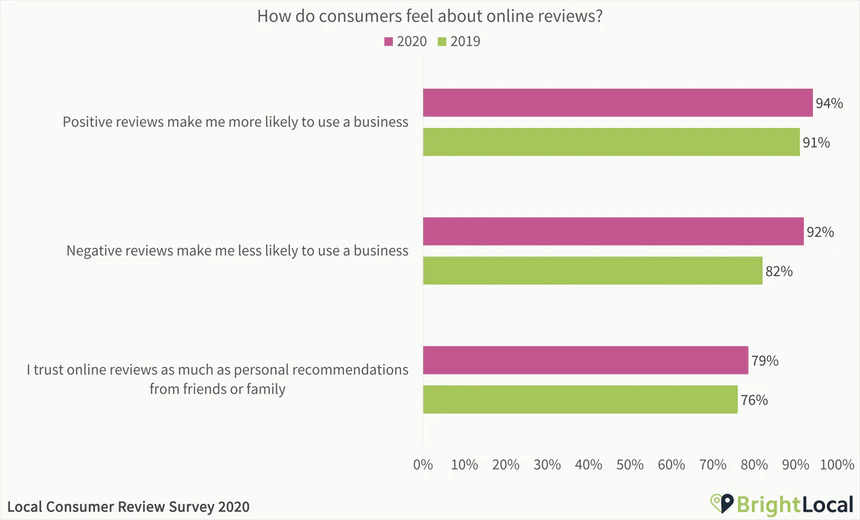
3. Clear Out the Clutter
I’ve said it before, and I’ll say it again: consumers have short attention spans.
If someone arrives on your landing page, only to be greeted by thousands of words of copy, multiple competing calls to action, and dozens of gaudy images, you can bet your bottom dollar they’re not going to stick around.
Sure, there’s some key information that you need to communicate—after all, you’re trying to convince people to buy from you. But in an ideal world, your landing pages should feature nothing more than:
- A clear headline (and subheadings, where necessary);
- A concise breakdown of the key features and benefits;
- Visuals that show off your product without misleading anyone; and
- Testimonials and reviews.
Beyond that general guidance, be sure to dive into your own data. Take a look at your top-converting landing pages and compare them to other pages on your site.
I bet you’ll find at least a couple of improvements that can be rolled out across the board.

Conclusion
Everyone wants a super-efficient, high-converting website. One that generates the biggest possible bang for your marketing buck.
But conversion rates aren’t your only consideration.
You could strip a bunch of copies from your landing pages and drive your conversion rate through the roof. But by doing so, you might harm your search rankings, meaning you bring in less traffic.
Is that a good result? Probably not.
So try out something new. Add popups and trust signals to key pages. Streamline the user journey. But always fall back on the data to understand the broader context of your actions.

